LIVE: Nigeria vs DR Congo – CAF World Cup qualifiers playoff final
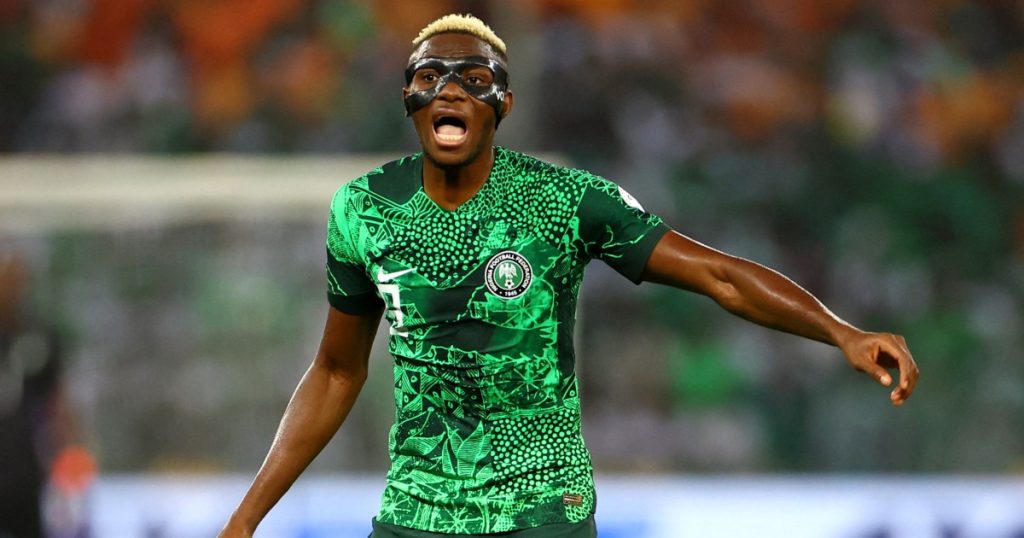
blinking-dotLive MatchLive Match, Follow the build-up, analysis, and live text commentary of the CAF playoffs final for the 2026 FIFA World Cup. Published On 16 Nov 202516 Nov 2025 Click here to share on social media share2 Share Adblock test (Why?)
Skateboarding helps Gaza children with trauma amid ruins, adds rare joy

A mobile skatepark moving between displacement camps in Gaza is providing rare mental health support to children trapped in one of the world’s most severe humanitarian crises, where trauma and grief are rife. Amid the wreckage of Gaza City, where collapsed buildings and twisted concrete dominate the landscape, a group of young Palestinians has transformed the destruction into an unlikely playground. Recommended Stories list of 3 itemsend of list Since the fragile ceasefire began on October 10, skateboard coaches have been running sessions that offer traumatised children brief moments of freedom and normalcy. “We used to have skateparks in the Gaza Strip; this was our dream here in Gaza,” said Rajab al-Reifi, one of the coaches working with the children. “But unfortunately, after we finally achieved that dream and built skateparks, the war came and destroyed everything.” The skateboarding initiative operates against a backdrop of continuing Israeli violence despite the ceasefire. Israeli forces have killed at least 260 Palestinians and wounded 632 others since the truce began on October 10, with attacks occurring on 25 of the past 31 days. Skateboarding helps Gaza children with trauma amid the ruins, adding some joy to their daily lives [Screengrab/Al Jazeera] Making do with what’s left The sessions face severe challenges. With equipment shortages across Gaza, every skateboard wheel and piece of wood has become precious. Al-Reifi often repairs damaged boards between sessions, knowing replacements are nearly impossible to obtain. One of the few flat courtyards to survive Israel’s bombardment provides a training ground for beginners, while more adventurous skaters have turned piles of rubble and collapsed walls into makeshift ramps and obstacles. Advertisement Rimas Dalloul, another dedicated coach, works to keep the children engaged despite the dire conditions. “We don’t have enough skateboards for everyone, and there is no protective gear,” she explained. “Their clothes are all they have to help cushion them when they fall. They get injured sometimes, but they always come back. The desire to play is stronger than the pain.” Seven-year-old Palestinian Marah Salem has enjoyed skateboarding in Gaza [Screengrab/Al Jazeera] ‘I used to run from bombardment to skate’ Among the young skaters is seven-year-old Marah Salem, who has been practicing for seven months. “I come here to have fun. I don’t want to skip any sessions; I want to be consistent,” she said. “Even during the war, I used to skateboard. I used to run away from the bombardment to skate on the streets.” Her determination reflects a broader resilience among Gaza’s children, who have endured nearly two years of Israeli military assault. The skateboarding sessions offer children a form of recreation and a temporary escape, but also a means to process trauma and a communal activity. The mental health needs of Gaza’s children remain staggering. Humanitarian organisations had already identified more than one million Palestinian children in need of mental health services before the latest conflict intensified. The scale of the conflict means no child has been shielded from its psychological impact, with mass displacement, family separations, and widespread casualties affecting the entire young population. At least 17,000 children are now unaccompanied or separated from their parents, while child protection cases surged by 48 percent in September alone, the International Rescue Committee reports. For the young skaters, the sessions offer something that war has tried to take away, the simple freedom of childhood play. Their schools have been decimated, their homes destroyed, and more than 658,000 school-age children have lost access to education for nearly two years. Yet in the ruins of their neighbourhoods, these children are finding ways to move forward. They are simply kids on skateboards, laughing, falling, getting back up, and pushing forward – both literally and metaphorically – through the rubble of their shattered world. Adblock test (Why?)
What’s the shadowy organisation taking Gaza Palestinians to South Africa?
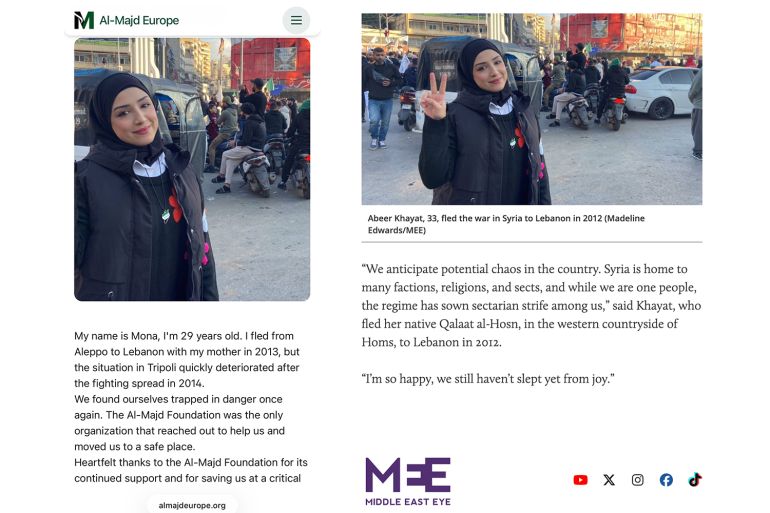
On Thursday morning, a chartered plane carrying 153 Palestinians from war-torn Gaza – many without the required travel documents – landed at an airport near Johannesburg, leaving South African officials “blindsided”. After nearly 12 hours of scrambling, the group was allowed to disembark into the care of a local charity organisation. More details have emerged about the scheme run by “Al-Majd Europe”, through which activists argue Israel is advancing its ethnic cleansing of Palestinians from Gaza. The Palestinian passengers were charged a hefty sum of money by the organisation, which says on its website that it coordinates “evacuations from conflict zones”. Here is everything we know about the group’s transit so far and who’s behind Al-Majd Europe. What happened in South Africa? The plane full of people sat on a runway for nearly 12 hours while South African authorities tried to figure out why they did not have exit stamps or slips from when they left Gaza, according to officials from South Africa’s border agency. They were also not sure when asked by immigration where they would stay or how long they planned to be in South Africa. The government allowed them to leave the plane after charity organisation Gift of the Givers offered to accommodate them. Officials said 23 Palestinians flew to other countries, without adding any more details. “These are people from Gaza who somehow mysteriously were put on a plane that passed by Nairobi and came here,” South African President Cyril Ramaphosa said Friday. Advertisement He added that “it does seem like they were being flushed out” of Gaza. South Africa’s intelligence services are investigating the incident. What is the company that flew them to South Africa? Behind the flight is Al-Majd Europe, which is accused of acting in coordination with Israeli authorities. Loay Abu Saif, who fled Gaza with his wife and children to Johannesburg, told Al Jazeera on Friday that he had heard about it through a social media advertisement. The Al-Majd Europe website says it was founded in 2010 in Germany, and the homepage has a pop-up warning about individuals pretending to be its agents, sharing phone numbers of “legitimate representatives”. But the site itself has no address or phone number, providing just a location in Sheikh Jarrah in occupied East Jerusalem. However, Al Jazeera was not able to find an office there. The website domain, almajdeurope.org, was only registered in February this year, while several links on the site lead nowhere. The email listed, [email protected], bounces back an automated message saying it does not exist. Namecheap, which registered the domain, has been cited in several cybersecurity reports on online fraud because of its low-cost, easy sign-up process. Al Jazeera learned that many people were told to pay via bank transfers to personal, not organisational, accounts. Does Al-Majd Europe do what it says it does? Among the links that work is a page with four “Impact Stories”. One post about “Mona”, a 29-year-old from Aleppo, Syria, is dated March 22, 2023, even though the website was only registered 10 months later. The narrative, written in “Mona’s” voice, expresses gratitude to Al-Majd for moving her and her mother “to a safe place” when they felt threatened in Lebanon, where they fled to in 2013. The photo, however, shows Abeer Khayat, who was 33 when photographed by journalist Madeline Edwards in December 2024 in Tripoli, Lebanon, for Middle East Eye. The online form reads: “For Gaza residents currently inside the Gaza Strip only! “Do you aspire to travel and start a new life? We are here to help you!” Left: Al-Majd’s story about ‘Mona’, who it claimed to have removed from Tripoli, Lebanon, in 2023; Right: The photo is of Abeer Khayat, photographed in Tripoli for the Middle East Eye in 2024 How did people end up on that flight? The Palestinian families, with a pregnant woman among them, boarded the plane not knowing their final destination, having paid Al-Majd $1,400 to $2,000 each – the price for children the same as adults. Advertisement Saif, who was on the plane, said he hadn’t known when they would leave Gaza until a day before, when he was told passengers could only take a small bag, a mobile phone, and some cash. They were taken by bus from southern Gaza’s Rafah to the Karem Abu Salem crossing (known as Kerem Shalom in Israel), where they were checked, then transferred to Israel’s Ramon Airport, without Israeli authorities stamping their travel documents. Another person interviewed by Al Jazeera on condition of anonymity said: “The … applicant must [have a young] family. [Then] the names are sent for security screening. Once that’s completed, and if the family is approved, they’re asked to pay,” he said. “There had been prior coordination with the Israeli army for the buses to enter Rafah,” he said. “The process was only routine.” The group left from Ramon in a Romanian aircraft and transited through Nairobi, Kenya, before landing in Johannesburg. Have there been similar flights before? A man who was on board the plane told Al Jazeera there had been a similar flight to Indonesia in June. Al-Majd’s website also claims to have facilitated a trip for “a group of doctors working in hospitals in the Gaza Strip” who it flew to Indonesia “for further studies and advanced medical training”. However, this post is dated April 28, 2024. Al Jazeera could not independently verify the authenticity of this post and a photograph of the group in it. Gift of the Givers founder Imtiaz Sooliman, who alleged that Al-Majd was one of “Israel’s front organisations”, told AP that this was the second plane to arrive in South Africa. Another plane arrived with more than 170 Palestinians on board on October 28, but that flight was not announced by authorities. What did Palestine say? The Palestinian Embassy in South Africa said in a statement that the flight was arranged by “an unregistered and misleading organization that exploited the tragic humanitarian conditions of our people in Gaza, deceived families, collected
More details emerge of Israel’s ‘brutal’ treatment of Palestinian detainees

Dozens of Palestinian prisoners are being held indefinitely in an underground Israeli detention facility, deprived of sunlight and subjected to extreme violence, Palestinian lawyers say, as more reports of abuse emerge from the devastation of Israel’s war on Gaza. Lawyers for Palestinians held at Rakevet, an underground wing of the Ramla (Nitzan) prison complex in central Israel, said their clients have been assaulted, starved, and denied medical care despite serious injuries. Recommended Stories list of 3 itemsend of list “When the prisoners arrive for the interview [with their lawyer], their faces show what they’ve endured,” lawyer Nadia Daqqa told Al Jazeera. “Particularly in this prison, prisoners are afraid to talk. The [interview] room is one square metre and the guards refuse to leave.” Despite that, Daqqa and other lawyers have collected testimonials from prisoners held at Rakevet. One detainee, referred to by the initials YH, had a broken jaw, shoulder and ribs, yet had received no medical treatment. Another, known as KHD, said Israeli prison guards punish the prisoners “by breaking their thumbs”. The reports are the latest to detail wide-scale abuse in Israel’s prison system, as the country has ramped up its arrests of Palestinians amid its two-year genocidal war on the Gaza Strip. More than 9,200 Palestinians are currently detained in Israeli prisons, according to the latest figures from Palestinian prisoner rights group Addameer. The majority are in what’s known as administrative detention, held without charge or trial. Advertisement Scores of detainees from Gaza have also been held in a notorious Israeli military detention camp known as Sde Teiman, where reports of killings, torture and sexual violence, including rape, have been rife since the Gaza war began in October 2023. While the Israeli authorities have denied allegations of abuse, Palestinian prisoners who were recently released from the facilities as part of last month’s Gaza ceasefire deal described harrowing abuses. The bodies of slain Palestinian detainees returned to the coastal Palestinian enclave under the ceasefire agreement also showed signs of torture, mutilation and execution, with some returned with ropes still tied around their necks. Several human rights groups in Israel have described the country’s prisons and detention facilities as a form of torture and cruel and unusual punishment. “Human rights organizations documented widespread abuses, including physical beatings, sexual violence, harassment, and threats – pointing to systemic and deliberate mistreatment,” the Public Committee Against Torture in Israel (PCATI) said in June. The wave of abuse also comes amid a push from within Israeli Prime Minister Benjamin Netanyahu’s far-right government to harden its policies towards Palestinian detainees. Earlier this week, the Israeli parliament advanced a bill that would impose the death penalty for so-called “terrorism” offences based on “racist” motives against Israelis. The move, which rights groups have condemned and said would exclusively target Palestinians, has been championed by Israel’s far-right National Security Minister Itamar Ben-Gvir. Attacks by Israeli settlers on Palestinian civilians, which have been burgeoning in the occupied West Bank and are carried out with impunity and often backed by the Israeli military, would not apply. “The enactment of a new law imposing the death penalty exclusively against Palestinians marks a new episode in the ongoing series of oppression and constitutes a grave escalation in Israel’s widespread violations against Palestinians, including hundreds of extrajudicial executions,” Addameer said on November 9. Basil Farraj, a professor at Birzeit University in the occupied West Bank, said the underground Rakevet facility is just one part of this wider system of abuse. “This secret centre is in fact a symptom of the broader phenomenon of Israeli carcerality, where Palestinians continue to be treated in a violent and, in fact, an extremely brutal way that denies and negates all of their rights,” Farraj told Al Jazeera. Advertisement He explained that many Palestinians have been arrested under Israel’s so-called “unlawful combatants” law, which allows the authorities to detain them indefinitely on security grounds without having to prove any allegations. “The fact that you are held without trial adds another layer of psychological abuse and psychological torture,” Farraj said. “Not knowing why you are being arrested … adds to these layers of violence and torture that Israel has entrenched over the past two years.” Adblock test (Why?)
Thousands march for climate action outside COP30 summit in Brazil

Indigenous and other climate activists say they need to ‘make their voices heard’ as UN conference hits halfway mark. Published On 15 Nov 202515 Nov 2025 Click here to share on social media share2 Share Thousands of people have marched through the streets of the Brazilian city of Belem, calling for the voices of Indigenous peoples and environmental defenders to be heard at the United Nations COP30 climate summit. Indigenous community members mixed with activists at Saturday’s march, which unfolded in a festive atmosphere as participants carried a giant beach ball representing the Earth and a Brazilian flag emblazoned with the words “Protected Amazon”. Recommended Stories list of 3 itemsend of list It was the first major protest outside the conference, which began earlier this week in Belem, bringing together world leaders, activists and experts in a push to tackle the worsening climate crisis. Indigenous activists previously stormed the summit, disrupting the proceedings as they demanded that Brazilian President Luiz Inacio Lula da Silva take concrete action to ensure their territories are protected from growing threats. Amnesty International warned in a recent report that billions of people around the world are threatened by the expansion of fossil fuel projects, such as oil-and-gas pipelines and coal mines. Indigenous communities, in particular, sit on the front lines of much of this development, the rights group said. Thousands of people took part in the climate march in Belem, Brazil, on Saturday [AFP] Branded the “Great People’s March” by organisers, Saturday’s rally in Belem came at the halfway point of contentious COP30 negotiations. “Today we are witnessing a massacre as our forest is being destroyed,” Benedito Huni Kuin, a 50-year-old member of the Huni Kuin Indigenous group from western Brazil, told the AFP news agency. Advertisement “We want to make our voices heard from the Amazon and demand results,” he said. “We need more Indigenous representatives at COP to defend our rights.” Youth leader Ana Heloisa Alves, 27, said it was the biggest climate march she has participated in. “This is incredible,” she told The Associated Press. “You can’t ignore all these people.” The COP30 talks come as the UN warned earlier this month that the world was on track to exceed the 1.5C (2.7F) mark of global warming – an internationally agreed-upon target set under the Paris Agreement – “very likely” within the next decade. If countries do as they have promised in their climate action plans, the planet will warm 2.3 to 2.5C (4.1 to 4.5F) by 2100, a report by the UN Environment Programme (UNEP) found. “While national climate plans have delivered some progress, it is nowhere near fast enough, which is why we still need unprecedented emissions cuts in an increasingly tight window, with an increasingly challenging geopolitical backdrop,” said UNEP chief Inger Andersen. Despite that urgency, analysts and some COP30 participants have said they don’t expect any major new agreements to emerge from the talks, which conclude on November 21. Still, some are hoping for progress on some past promises, including funding to help poorer countries adapt to climate change. People hold a giant Brazilian flag reading ‘Protected Amazon’ during the march [AFP] Adblock test (Why?)
Sudan’s army captures two areas in North Kordofan as RSF burns more bodies
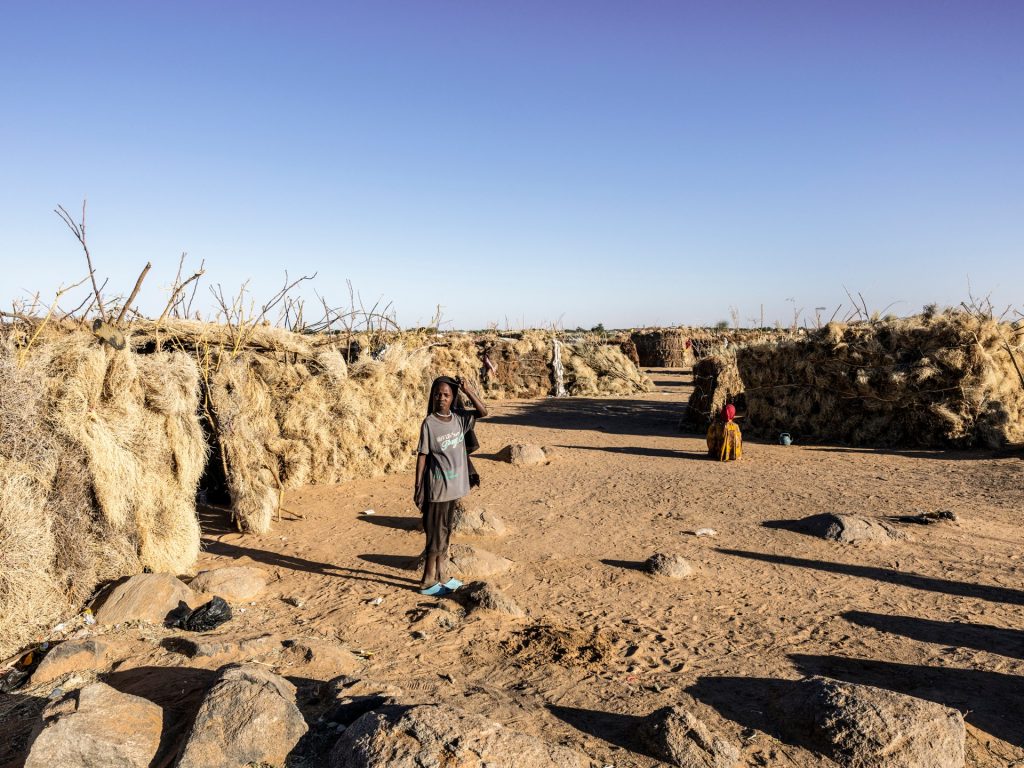
RSF is burning and burying bodies near a university, mosque, camp for the displaced people, and hospital in el-Fasher, Yale University researchers say. The government-aligned Sudanese Armed Forces (SAF) have recaptured two territories in the North Kordofan state from the Rapid Support Forces (RSF), as the paramilitary group continues burning and burying bodies in Darfur’s el-Fasher to hide evidence of mass killings. Footage circulating online this week showed army soldiers holding assault rifles and rocket-propelled grenades celebrating their takeovers of Kazqil and Um Dam Haj Ahmed in North Kordofan, the state where intense fighting is expected to rage over the coming weeks. Recommended Stories list of 3 itemsend of list Kazqil, which had fallen to the RSF in late October, is located south of el-Obeid, the strategic capital city of the state in central Sudan, which the paramilitary group is trying to capture from the army. أبطال القوات المسلحة من داخل ” كازقيل” بولاية شمال كردفان#السودان #السودان_ينتصر pic.twitter.com/wVflEodHK5 — Sudan News 🇸🇩 (@Sudan_tweet) November 15, 2025 The fighting between the two rival generals leading the army and the paramilitary group, which started in April 2023, has increasingly turned east over the past weeks as the RSF solidifies control over the western parts of the war-torn country, now in its third year of a brutal civil war. The fighting, fuelled by arms supplies from the region, has created what the United Nations has called the largest displacement crisis in the world. More than 12 million people have been forced from their homes, and tens of thousands have been killed and injured. The UN has also confirmed starvation in parts of the country. Advertisement The RSF said last week it accepted a ceasefire proposal put forward by the United States and other mediators, with the announcement coming after an international outcry over atrocities committed by the paramilitary group in el-Fasher, the capital of North Darfur state in western Sudan. But the army has refused to agree to a ceasefire under the current battle lines, and both sides have continued to amass troops and equipment in the central parts of the country to engage in more battles. The RSF launched an offensive against the Kordofan region at the same time as it took el-Fasher late last month, seizing the town of Bara in North Kordofan state as a crucial link between Darfur and central Sudan. The army had recaptured the town just two months earlier. Satellite images reveal mass graves More than two and a half weeks after fully capturing el-Fasher from the army, the RSF has continued to dispose of bodies in large numbers. An analysis of satellite imagery released by Yale’s Humanitarian Research Lab (HRL) on Friday exposed four new locations where paramilitary fighters are disposing of bodies in and around el-Fasher. Activities consistent with body disposal are visible at the University of Alfashir, a structure on the edge of Abu Shouk camp for internally displaced people, a neighbourhood near al-Hikma Mosque, and at Saudi Hospital, where RSF forces massacred hundreds. The HRL could not conclude how many people the RSF had killed or how quickly, but it said the observations are alarming, given the fact that the whereabouts of many civilian residents remain unknown. 🚨ATROCITY ALERT🚨@HRL_YaleSPH has identified four new locations where the RSF is disposing of bodies in and around El Fasher. #KeepEyesonSudan 🛰️@Vantortechhttps://t.co/y5gaMRlBm2 pic.twitter.com/OsCVb1ihTf — Humanitarian Research Lab (HRL) at YSPH (@HRL_YaleSPH) November 14, 2025 Nathaniel Raymond, the lead researcher of that report, said an estimated 150,000 civilians are unaccounted for, and daily monitoring of city streets shows no activity in markets or water points, but only RSF patrols and many bodies. “We can see them charred. So the question is, where are the people and where are the bodies coming from?” he told Al Jazeera. Raymond said the evidence also includes numerous videos released by the RSF fighters themselves, who are “the most prodigious producers of evidence about their own crimes”. Adblock test (Why?)
Who is Jeannette Jara, the communist leading Chile’s presidential election?
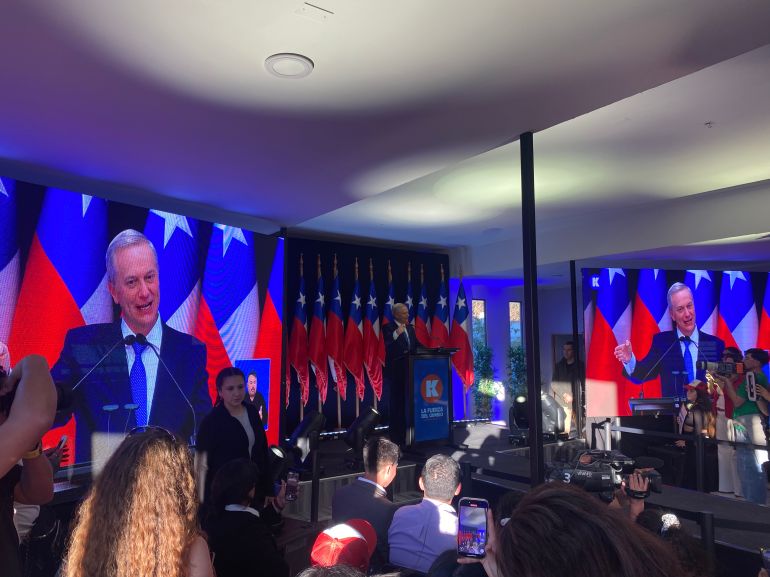
Fears of crime Yet not all Chileans are convinced. Virginia Peredo, a domestic worker, told Al Jazeera she “would never” vote for the left-wing candidate, offering a blunt explanation: “She is a communist.” Peredo was one of the nearly 200 supporters at a rally for Jara’s right-wing rival Kast in Copiapo, a mining town some 750km (466 miles) north of Villa Alemana. Many of Kast’s supporters believe that Jara stands for the status quo. Under President Boric, Jara’s former boss, Chile saw a period of slow economic growth. Boric has also struggled to quell concerns about an increase in organised crime and undocumented immigration. Peredo, for instance, said she is afraid to leave the house at night. Although she moved to Chile from Bolivia 10 years ago, she supports Kast’s hardline stance, which includes militarising the country’s borders and deporting all irregular immigrants. “The good ones can stay, but the bad ones have to go,” Peredo said of immigrants to Chile. “They make us all look bad.” Candidate Jose Antonio Kast speaks to voters in Copiapo, Chile [Sophia Boddenberg/Al Jazeera] Kast, a 59-year-old Catholic and founder of the far-right Republican Party, has leaned into those fears of immigration and violence to build his base of support. A report released in April from the University of San Sebastian found that activity linked to organised crime increased by 8.4 percent between 2022 and 2023. “This is not a crisis. It’s an emergency,” Kast told his supporters in Copiapo. Christopher Sabatini, senior research fellow for Latin America at the think tank Chatham House, told Al Jazeera that Kast’s “iron-fisted approach to crime” has struck a chord among voters. “If you look at number-one demands, security, crime and immigration are all up there. Those are not what Jara is running on,” he said. Sabatini sees parallels between Kast and the rise of other right-wing leaders, like Donald Trump in the United States and Javier Milei in Argentina. In Milei’s case, his victory in the 2023 presidential race was seen as a sign of discontent with the left-wing Peronist government that was in power at the time. “[Kast is] exploiting people’s fears very effectively, in the same way Milei was able to exploit people’s hate with 16 years of Peronism, and Trump was able to with immigration,” Sabatini explained. Adblock test (Why?)
Normalising hate: Israel leans in to anti-Palestinian violence, rhetoric
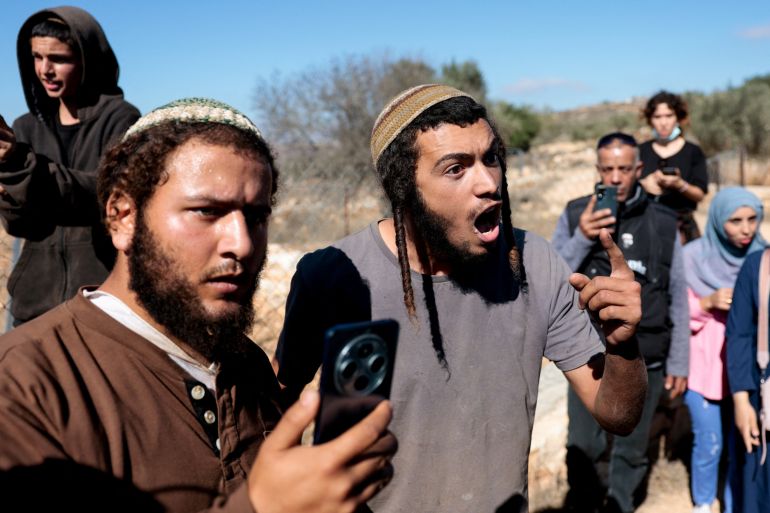
The US-imposed ceasefire of October 10 has not stopped Israel’s regular attacks on the Gaza Strip. Nor has it threatened to hold a parliament and society that largely cheered on the war, which has been deemed genocidal by multiple international bodies, accountable for their actions. Instead, fuelled by what analysts from within Israel have described as an absolute sense of impunity, anti-Palestinian violence has intensified across the country and the occupied West Bank while much of the world continues to look away, convinced that the work of the ceasefire is done. Recommended Stories list of 4 itemsend of list In the parliament, or Knesset, a senior lawmaker and member of the governing party openly defended convicted ultranationalist Meir Kahane, long considered beyond the pale even by members of Israel’s right wing and whose Kach movement has been banned as a “terrorist organisation”. At the same time, the parliament is debating reintroducing the death penalty, as well as expanding the terms of the offences for which it might apply – both unambiguously targeting Palestinians. Under the legislation, proposed by ultranationalist National Security Minister Itamar Ben-Gvir – who himself has past “terrorism”-related convictions for his outspoken support of Kahane – anyone found guilty of killing Israelis because of “racist” motives and “with the aim of harming the State of Israel and the revival of the Jewish people in its land” would face execution. That bill passed its first reading this week. “The absence of any attempt to assert accountability from the outside, from Israel’s allies, echoes into Israel’s own Knesset,” analyst and former Israeli peace negotiator Daniel Levy said. “There’s no sense that Israel has done anything wrong or that anyone should be held to account.” Even Israel’s media, traditionally cheerleaders of the country’s war on Gaza, has not proven exempt from the hardening of attitudes. Legislation is already under way to close Army Radio because it had been broadcasting what Defence Minister Israel Katz described as political content that could undermine the army, as well as extend what lawmakers have referred to as the so-called “Al Jazeera law”, allowing them to shutter any foreign media perceived as a threat to Israel’s national security. Advertisement “Israel has built up this energy through two years of genocide,” Orly Noy, editor of the Hebrew-language Local Call, told Al Jazeera. “That hasn’t gone anywhere. “Just because there’s a ceasefire and the hostages are back, the racism, the supremacy and the unmasked violence didn’t just disappear. We’re seeing daily pogroms by soldiers and settlers in the West Bank. There are daily attacks on Palestinian bus drivers. It’s become dangerous to speak Arabic, not just within the ‘48, but anywhere,” she said, referring to Israel’s initial borders of 1948. ‘May your village burn’ In the West Bank, Israeli violence against Palestinians has reached unprecedented proportions. According to the United Nations Office for the Coordination of Humanitarian Affairs (OCHA), there were 264 attacks against Palestinians in the month the ceasefire was announced: the equivalent of eight attacks per day, the highest number since the agency first started tracking attacks in 2006. An Israeli settler gestures as he argues with a Palestinian farmer (not pictured), during olive harvesting in Silwad, near Ramallah, in the Israeli-occupied West Bank, October 29, 2025 [Mohammed Torokman/Reuters] Israel’s interior appears no less secure from the mob. On Tuesday, a meeting at a private house in Pardes Hanna near Haifa, hosted by Ayman Odeh, a Palestinian member of the Knesset, was surrounded and attacked by a mob of right-wing protesters. As police reportedly stood nearby, Israeli protesters surrounded the house, chanting “Terrorist! Terrorist!” and singing “May your village burn” in an attempt to interrupt the meeting, which was billed as a chance to build “partnership and peace” after “two years characterised mainly by pain and hostility”. And in the Israeli Supreme Court on Monday, two of the soldiers accused of the brutal gang rape of a Palestinian prisoner at Sde Teiman prison last year were met, not by condemnation, but applause and chants of “We are all Unit 100”, referring to the military unit accused of raping the Palestinian man. “They’re not cheering rapists, they’re cheering this idea that nothing matters any more,” Ori Goldberg, a political scientist based near Tel Aviv, said. “Genocide devalues everything. Once you’ve carried out a genocide, nothing matters any more. Not the lives of those you’ve killed and, by extension, not your own. Nothing carries any consequence. Not your actions, nothing. We’ve become hollow.” Seeming to prove Goldberg’s point in the Knesset on Wednesday was Nissim Vaturi, the body’s deputy speaker and a member of Prime Minister Benjamin Netanyahu’s governing Likud party. Vaturi crossed one of Israel’s few political rubicons and directly referenced Kahane, whose name has become a rallying cry for settlers and ultranationalist groups across Israel. Meir Kahane’s violent anti-Arab ideology was considered so repugnant that Israel banned him from parliament and the US listed his party, Kach, as a ‘terrorist group’, October 27, 1988 [Susan Ragan/AP] Asked if he was in favour of “Jewish terror”, Vaturi replied “I support it. Believe me, Kahane was right in many ways where we were wrong, where the people of Israel were wrong,” he said, referencing the former lawmakers convicted of “terrorism” offences in both Israel and the US and whose party, Kach, remains a proscribed “terrorist group” across much of the world. Advertisement “Once you’ve manufactured consent for genocide, you need to be proactive in dialling the cruelty levels down, which is something we’re not seeing,” analyst and former Israeli peace negotiator Daniel Levy said. “If anything, we’re just seeing it continue. They have dialled the cruelty levels up to 11 … and they’re leaving them there.” Adblock test (Why?)
Tanzania’s president announces probe into post-election protest deaths
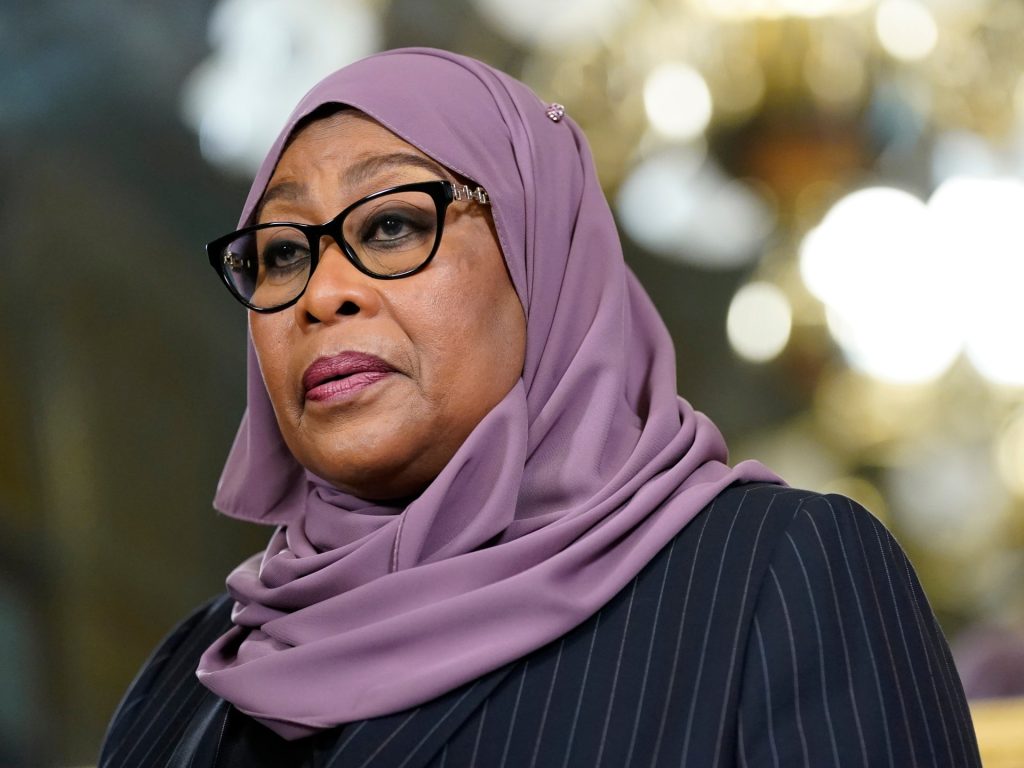
Samia Suluhu Hassan, whose re-election prompted protests and a deadly police crackdown, faces international calls for accountability. Tanzanian President Samia Suluhu Hassan says her government will launch an inquiry into the deadly unrest that erupted following her controversial re-election last month, as claims of an undemocratic vote process prompted mass protests. Speaking during the opening session of Tanzania’s new parliament on Friday, Hassan said she was “deeply saddened by the incident” and offered condolences to the families who lost loved ones in the crackdown. Recommended Stories list of 3 itemsend of list “The government has taken the step of forming an inquiry commission to investigate what happened,” she added. Her comments mark the first conciliatory message since Tanzanian authorities violently cracked down on widespread demonstrations following the country’s October 29 presidential election. Hassan was declared the winner of the vote with nearly 98 percent support, after her leading rivals were barred from participating, fuelling anger and frustration among many Tanzanians who said the contest was unfair. While the exact death toll is unclear, Tanzania’s main opposition party has said hundreds of people were killed as the government sent troops into the streets to disperse the protests. Authorities also imposed an internet blackout on the East African nation. ‘Grave human rights violations’ Rights groups have called for an independent and thorough investigation into what happened, with Amnesty International saying the authorities committed “grave human rights violations that include unlawful killings, enforced disappearances, unlawful detentions”. Advertisement “Authorities should promptly, thoroughly, independently, impartially, transparently and effectively investigate all killings by security agents and bring to justice in fair trials those suspected of being responsible,” the organisation said in a statement in early November. The United Nations human rights chief, Volker Turk, also urged the Tanzanian government earlier this week to investigate the killings and other rights violations. He called on the authorities to provide information about the whereabouts of people who have gone missing and to hand over the bodies of those killed. Reports of families desperately searching everywhere for their loved ones, visiting one police station after another and one hospital after another are harrowing,” Turk said, adding that his office has been unable to verify casualty figures due to the security situation and internet shutdown. Probe into youth ‘offences’ Meanwhile, dozens of people have been charged with treason and other offences in relation to the protests. On Friday, President Hassan, who first took power in 2021 after the sudden death of her predecessor, John Magufuli, appeared to indicate there would be leniency. “I realise that many youths who were arrested and charged with treason did not know what they were doing,” she said during her address in parliament. “As the mother of this nation, I direct the law enforcement agencies and especially the office of the director of police to look at the level of offences committed by our youths. “For those who seem to have followed the crowd and did not intend to commit a crime, let them erase their mistakes,” she added. Hassan also acknowledged the demands of the opposition Chadema party, which has said, for any meaningful reconciliation to happen, constitutional reforms are needed. She said her administration would embark on a constitutional reform process within its first 100 days. Adblock test (Why?)
Gaza girl shares story of being found alive in morgue after Israeli attack
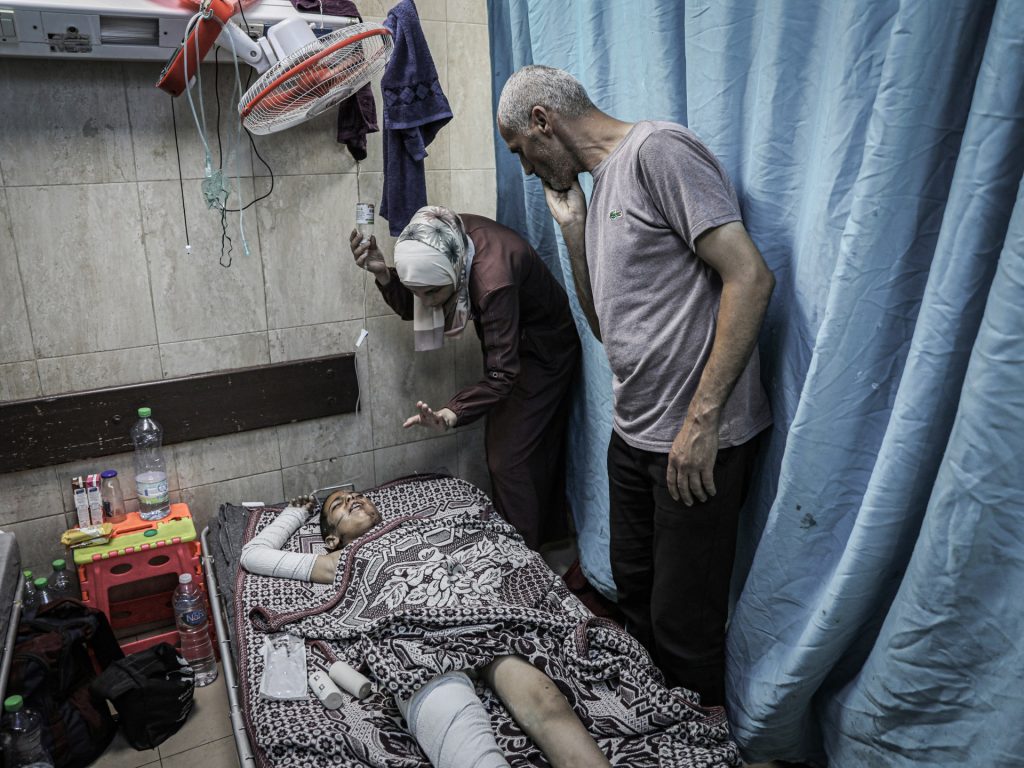
Raghad al-Assar, 12, continues to suffer trauma after her home in central Gaza was bombed, killing two of her sisters. Twelve-year-old Raghad al-Assar lay unconscious in a Gaza mortuary for eight hours after she was declared dead following an Israeli attack on her home in central Gaza last year. “We were sitting in our home like everyone else when suddenly bullets, planes and drones came down on us,” she told Al Jazeera. Recommended Stories list of 3 itemsend of list Al-Assar was saved by chance when a Palestinian man searching for his son’s body in the morgue saw the young girl’s fingers moving as she lay on a cold slab. “I was in a coma for two weeks, and when I woke up, my family told me that I had been placed in the morgue refrigerator,” she recounted. Two of al-Assar’s sisters were killed in the attack on June 8, 2024, and other members of her family were hurt as well. “All my family was injured, and two of my sisters were martyred. My eldest sister’s condition is worse than mine. She can’t see in one eye, has burns, deep wounds and stomach problems,” al-Assar revealed. Her story is one of the many to emerge from Israel’s war on Gaza, which United Nations experts have described as a genocide. According to the UN Children’s Fund, some 64,000 children have “reportedly been killed or maimed” in Israeli attacks on coastal Palestinian territory. Israel’s war on Gaza has killed at least 69,187 Palestinians and wounded 170,703 since its start in October 2023. ‘Changed her into another person’ Al-Assar’s father, Mohammed, was working when his house was attacked. A relative had called to tell him what happened. “News came to me that my house was targeted. I was at work, not at home. I rushed from work to the hospital to check what happened,” he said. Advertisement “We went to the house to look for Raghad under the rubble. We did not find any sign of her.” After he reunited with his daughter, Mohammed noticed the attack had completely changed her. “The incident that occurred to her changed her mental health and personality into another person,” he explained. “There would be incidents where we walk on the street, where she faints while we’re walking on the street.” Al-Assar told Al Jazeera she suffers from nightmares and anxiety whenever she recalls the day of the attack. “I don’t like to remember, don’t want to hear war sounds, and avoid things that bring back memories. If I hear bombing or planes, I get frightened,” she said. Her family is hoping to get al-Assar and her sister medical treatment abroad. “I want to go abroad for treatment. That is my dream,” al-Assar said. “It is a child’s right to live just like other people abroad — for them to have play and have wellbeing.” Two years of Israeli bombardment across Gaza have destroyed many health facilities and killed hundreds of medics, resulting in the collapse of the territory’s medical infrastructure. While Hamas and Israel agreed last month to a ceasefire, Israel continues to conduct attacks on the enclave, and at least 260 people have been killed since the truce began on October 10. Adblock test (Why?)

